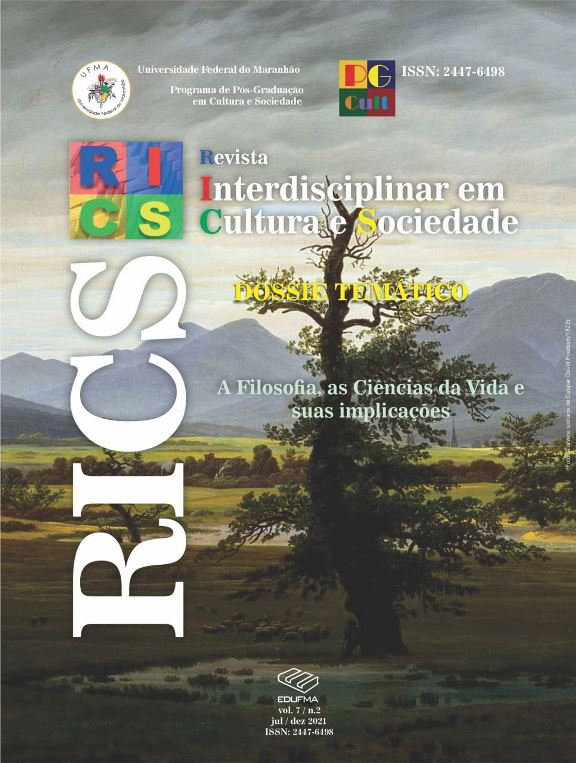Vida e morte em Fechner e Freud
DOI:
https://doi.org/10.18764/2447-6498.v7n2p42-54Keywords:
Freud. Fechner. Vida. Morte.Abstract
As concepções de vida e morte de Freud e de Fechner se entrelaçam no momento em que o primeiro, em Além do princípio do prazer (1920), aclimata ao seu arcabouço teórico o princípio fechneriano da tendência à estabilidade, tomado a partir de então como um princípio mais geral ao qual se subordina o princípio da constância (ou princípio do Nirvana). O princípio de Fechner, contudo, é destacado por Freud de uma obra publicada em 1873, onde seu autor o formula como um princípio físico que se insere em uma concepção geral sobre a vida — sobre a sua origem e o seu desenvolvimento, mas também o seu ocaso —, concepção que difere sobremaneira da visão científica usual, à qual Freud se filia. No entanto, a visão sobre a vida e a morte dos dois autores conflui a partir do ponto em comum representado pelo princípio da tendência à estabilidade, que, em Fechner, leva os organismos progressivamente ao estado inorgânico e, em Freud, parece poder ser entendido como o fundamento da pulsão de morte, que naturalmente se esforça por alcançar este mesmo fim.
Palavras-Chave: Freud. Fechner. Vida. Morte.
Life and death in Fechner and Freud
ABSTRACT
Freud's and Fechner's conceptions of life and death are intertwined when the former, in Beyond the Pleasure Principle (1920), acclimatizes to his theoretical framework the Fechnerian principle of the tendency to stability, taken from then on as a more general principle to which the constancy principle (or Nirvana principle) is subordinated. Fechner's principle, however, is highlighted by Freud from a work published in 1873, where its author formulates it as a physical principle that fits into a general conception of life — about its origin and its development, but also the its sunset — a conception that differs greatly from the usual scientific view, to which Freud adheres. However, the vision of life and death of the two authors converges from the common point represented by the principle of the tendency to stability, which, in Fechner, leads organisms progressively to an inorganic state and, in Freud, seems to be understood as the foundation of the death drive, which naturally strives to achieve this very end.
Keywords: Freud. Fechner. Life. Death.
Downloads
Downloads
Published
How to Cite
Issue
Section
License
Direitos autorais da Revista Interdisciplinar em Cultura e Sociedade
Este obra está licenciado com uma Licença Creative Commons Atribuição 4.0 Internacional.


















